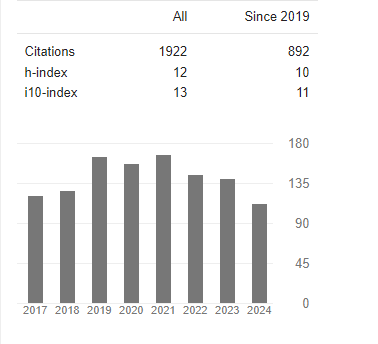Comparative Analysis of Fermented Cow and Goat Milk with their Nutritional Content in Gusau, Nigeria
Abstract
Anthonia M Oladokun and Nasir Garba Anka
The main source of a daily diet that includes high-quality foods with high biological potential that offer both nutritional and culinary benefits is typically regarded as milk. Humans and other mammalian species use milk secretion to feed their young because it is high in antibodies and contains considerable amounts of water, proteins, carbohydrates, minerals, organic acids, enzymes, vitamins, and calcium. One other definition of milk is "nature's most nearly perfect single food." This project's major objective is to identify the biochemical changes associated with the fermentation of cow and goat milk and its nutrient content. While coagulase catalase is found in cow milk, the biochemical enzyme activities of oxidase and catalase are significantly more prevalent in goat milk during fermentation than in cow milk. Cow milk has a higher moisture content (85.98%) than goat milk, while goat milk has a higher crude lipid content (15.36%) than cow milk. Goat milk has the highest energy value, at (78.93%). Goat milk contains the most cow milk overall, according to the results.The main source of a daily diet that includes high-quality foods with high biological potential that offer both nutritional and culinary benefits is typically regarded as milk. Humans and other mammalian species use milk secretion to feed their young because it is high in antibodies and contains considerable amounts of water, proteins, carbohydrates, minerals, organic acids, enzymes, vitamins, and calcium. One other definition of milk is "nature's most nearly perfect single food." This project's major objective is to identify the biochemical changes associated with the fermentation of cow and goat milk and its nutrient content. While coagulase catalase is found in cow milk, the biochemical enzyme activities of oxidase and catalase are significantly more prevalent in goat milk during fermentation than in cow milk. Cow milk has a higher moisture content (85.98%) than goat milk, while goat milk has a higher crude lipid content (15.36%) than cow milk. Goat milk has the highest energy value, at (78.93%). Goat milk contains the most cow milk overall, according to the results.



